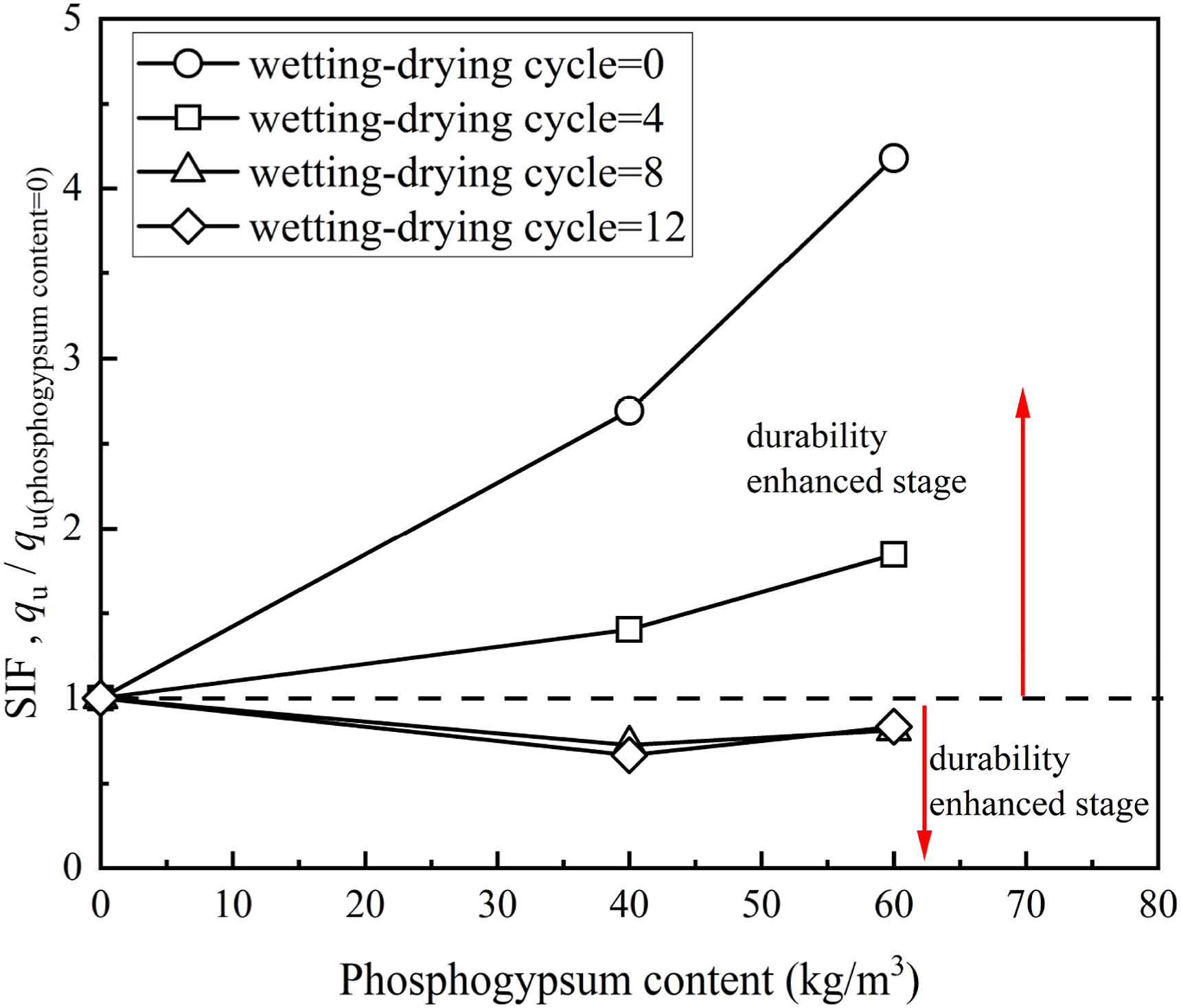JRMGE / Vol 16 / Issue 3
Wetting-drying effect on the strength and microstructure of cement-phosphogypsum stabilized soils
Lingling Zeng, Xia Bian, Jiaxing Weng, Tao Zhang
Show More
a College of Civil Engineering, Zhejiang University of Technology, Hanzhou, 310014, China
b Key Laboratory of Ministry of Education for Geomechanics and Embankment Engineering, Hohai University, Nanjing, 210098, China
c State Key Laboratory for Geomechanics and Deep Underground Engineering, China University of Mining and Technology, Xuzhou, 221116, China
d Jiangsu Water Source Company Ltd. of the Eastern Route of the South-to-North Water Diversion Project, Nanjing, 210000, China
e Power China Zhongnan Engineering Corporation Limited, Changsha, 410027, China
2024, 16(3): 1049-1058. doi:10.1016/j.jrmge.2023.06.022
Received: 2023-01-07 / Revised: 2023-03-03 / Accepted: 2023-06-15 / Available online: 2023-10-27
2024, 16(3): 1049-1058.
doi:10.1016/j.jrmge.2023.06.022
Received: 2023-01-07
Revised: 2023-03-03
Accepted: 2023-06-15
Available online: 2023-10-27
Phosphogypsum has often been used as an effective and environmentally friendly binder for partial replacement of cement, improving the engineering properties of slurries with high water content. However, the influence of phosphogypsum on the physicomechnical properties of stabilized soil subjected to wetting–drying cycles is not well understood to date. In this study, the effect of phosphogypsum on the durability of stabilized soil was studied by conducting a series of laboratory experiments, illustrating the changes in mass loss, pH value and unconfined compressive strength (qu) with wetting-drying cycles. The test results showed that the presence of phosphogypsum significantly restrained the mass loss in the early stage (lower than the 4th cycle), which in turn led to a higher qu of stabilized soil than that without phosphogypsum. After the 4th cycle, a sudden increase in mass loss was observed for stabilized soil with phosphogypsum, resulting in a significant drop in qu to a value lower than those without phosphogypsum at the 6th cycle. In addition, the qu of stabilized soils correlated well with the measured soil pH irrespective of phosphogypsum content for all wetting–drying tests. According to the microstructure observation via scanning electron microscope (SEM) and X-ray diffraction (XRD) tests, the mechanisms relating the sudden loss of qu for the stabilized soils with phosphogypsum after the 4th wetting-drying cycle are summarized as follows: (i) the disappearance of ettringite weakening the cementation bonding effect, (ii) the generation of a larger extent of microcrack, and (iii) a lower pH value, in comparison with the stabilized soil without phosphogypsum.
Keywords: Wetting-drying, Phosphogypsum, Microstructure, Durability
Article Data
Author(s) Information
Lingling Zeng

Lingling Zeng obtained her PhD in geotechnical engineering from Southeast University, China in 2011. In 2011–2017, she was a lecture by the College of Civil Engineering in Fuzhou University, China. During 2014–2015, she worked as a postdoctor at the Géotechnique Group of Laboratoire Navier in Ecole des Ponts ParisTech (ENPC) in France. She was promoted to professor in Fuzhou University in 2017. In September 2020, she worked at the College of Civil Engineering in Zhejiang University of Technology, China. Her research interests cover soil behavior and ground improvement, mechanical behavior of dredged deposits and treatment, and environmental geotechnics.

